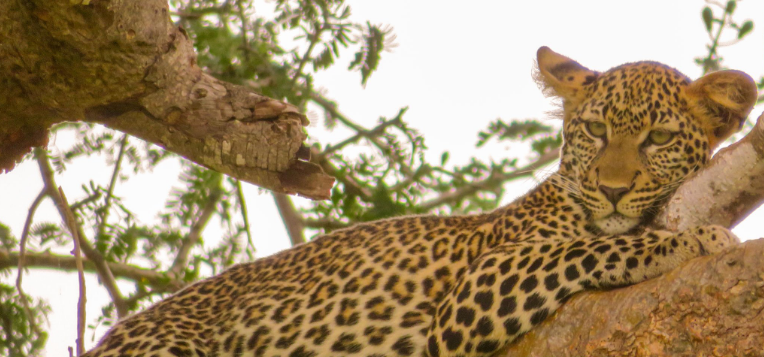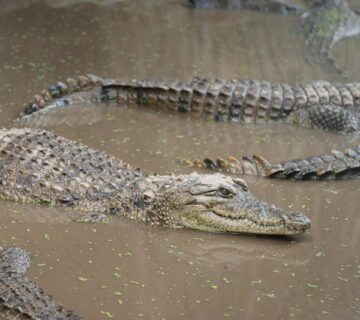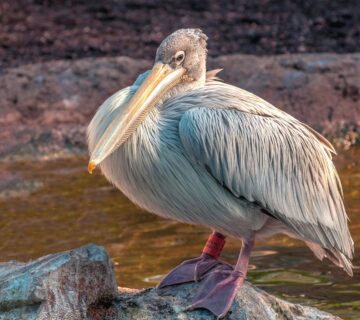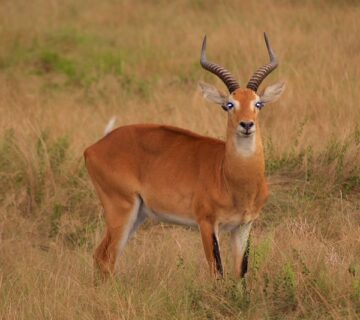Where to See Leopards in Rwanda’s Akagera Park
Rwanda, often referred to as the “Land of a Thousand Hills,” is renowned for its breathtaking landscapes, rich biodiversity, and incredible wildlife. While the country is most famous for its mountain gorillas, leopards in Akagera National Park offer an equally thrilling wildlife experience. These elusive and majestic big cats are among the most sought-after sightings for safari enthusiasts. If you’re wondering where and how to spot leopards in Akagera, this guide will provide inspiration, tips, and insights to make your adventure unforgettable.
The Majesty of Leopards in Akagera National Park
Leopards (Panthera pardus) are the most elusive of Africa’s “Big Five,” known for their stealth, strength, and striking beauty. In Akagera National Park, these solitary predators thrive in the savannahs, woodlands, and along the lakeshores. Unlike lions, which are often seen in prides, leopards prefer solitude, making sightings a rare and special event.
Akagera’s diverse ecosystem—comprising open grasslands, acacia woodlands, and wetlands—provides the perfect habitat for leopards. Their adaptability allows them to thrive in various environments, from dense thickets to rocky outcrops.
Best Areas to Spot Leopards in Akagera
While leopards can be found throughout the park, certain areas increase your chances of an encounter. Below is a table highlighting the prime locations for leopard sightings:
Table 1: Best Zones for Leopard Sightings in Akagera
| Zone | Habitat Type | Why It’s Ideal for Leopards |
|---|---|---|
| Northern Plains | Open Savannah | High prey density; leopards hunt impalas and zebras |
| Mutumba Hills | Rocky Outcrops | Perfect for leopards to rest and survey territory |
| Lake Ihema Shores | Wooded Areas | Ample cover for stalking prey near water sources |
| Eastern Woodlands | Dense Acacia Forests | Provides shade and camouflage for ambush hunting |
When to Visit for the Best Leopard Sightings
Timing is crucial when planning a safari to see leopards. These nocturnal creatures are most active at dawn and dusk, making early morning and late afternoon game drives the best times for sightings. Additionally, the dry season (June to September) is ideal because vegetation is thinner, and animals congregate near water sources.
Table 2: Optimal Times for Leopard Sightings
| Time of Day | Season | Why It’s Best |
|---|---|---|
| Early Morning (5:30 AM – 8 AM) | Dry Season (June-Sept) | Cool temperatures; leopards return from night hunts |
| Late Afternoon (4 PM – 6:30 PM) | Dry Season (June-Sept) | Active hunting time before nightfall |
| Night Drives (With Guides) | Year-Round | Special permits allow spotlight sightings |
Tips for Increasing Your Chances of Seeing Leopards
Hire an Experienced Guide – Local guides know the park’s terrain and leopard behavior, increasing your chances of a sighting.
Patience is Key – Leopards are masters of camouflage; spend time scanning trees and rocky areas.
Listen for Alarm Calls – Baboons and antelopes often sound alarms when a leopard is nearby.
Use Binoculars – These cats blend into their surroundings; optics help spot them in dense foliage.
Stay Quiet – Leopards are shy; minimizing noise prevents them from retreating.
The Symbolism of Leopards: Lessons in Resilience and Adaptability
Beyond their beauty, leopards symbolize resilience, adaptability, and strength—qualities that inspire us in our own lives. Just as leopards navigate their environment with precision and patience, we too can learn to:
Adapt to Change – Like leopards thriving in varied habitats, we must embrace life’s challenges.
Trust Our Instincts – Leopards rely on sharp senses; we should listen to our inner voice.
Move with Purpose – Every step a leopard takes is calculated; we should pursue our goals with focus.
Conservation Efforts: Protecting Rwanda’s Leopards
Akagera’s leopards were once threatened by poaching and habitat loss, but thanks to conservation efforts by African Parks and the Rwanda Development Board, their numbers are stabilizing. Responsible tourism plays a key role—by visiting Akagera, you contribute to wildlife protection and community development.
The Magic of Encountering Leopards in Akagera
Seeing a leopard in the wild is a rare and awe-inspiring experience. Akagera National Park offers one of the best opportunities in East Africa to witness these magnificent cats in their natural habitat. Whether you’re a wildlife enthusiast, a photographer, or simply seeking adventure, a journey to Akagera in search of leopards will leave you with unforgettable memories and a deeper appreciation for nature’s wonders.
So pack your binoculars, book a guided safari, and set out on a quest to find Rwanda’s elusive leopards—the silent kings of Akagera.





